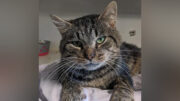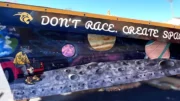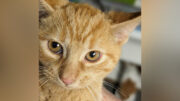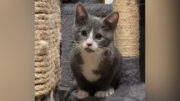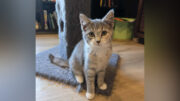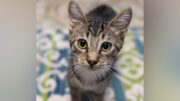In September of this year, I will have worked for 20 years as a small community photojournalist in Northwest Pennsylvania. I began at the Meadville Tribune and covered everything one must cover in the news business. I had a few opportunities to go to work for larger metro papers but chose not to. I feel small communities need to have their voice heard, understood and documented with respect by people who care deeply about the issues and the people.
When I came to the Derrick and News-Herald, it was with this same thought in mind. Learn the community’s heart and work hard to try to show that in my photographs.
One part of the job I never have gotten used to though – covering tragedy. I know some reporters and photographers who have grown hardened because they have had to cover so much of it. Not that they are unfeeling, but they have had to create a defense against the endless reality of violent or accidental tragedy in higher-populated areas.
To get yourself to cover hard news situations, you have to harden yourself somewhat, there is no question. You have to force yourself to know the importance of what you do in informing the public of what is going on.
Yesterday, I went with fellow reporter Jon Haag to cover what we heard on the scanner as a garage fire with possible explosions. As we went, we talked about how to approach a fire scene. Jon is a fairly young reporter and hasn’t covered much spot news. To be honest, in my 20 years, I haven’t really either in comparison to my many friends who work at large metro papers. I’ve probably covered 50ish fires and accidents combined. Maybe more, maybe less.
You don’t count.
I talked about how important it is to not be in the responders way, respect the responders and always communicate who you are and your intentions. Park your car so it won’t be in the way, even if it means having to hike a fair bit. You communicate to the fire police directing traffic who you are and that you know how to stay out of the way so they let you get to where you need to cover the story. Always respect their job. Their job is more important at that moment than ours is.
We got to the scene and saw that the garage was heavily damaged. Destroyed. I asked someone looking at the fire if they were the owner of the property. I like to talk to the owners of the property to let them know who I am and why I am there. I was told no and that they were trying to locate the owners.
This went over my head yesterday. I thought that simply meant they were not home. I went about doing my job looking for photographs to tell the story of the firefighters just trying to put out the fire. Without getting in anyone’s way, I started making pictures from a distance and slowly worked my way in closer.
Not for one second thinking that ‘trying to locate the owners” meant they were searching inside the burned out and collapsed building.
This garage was about 100 yards from the road, down a hill and long driveway. When the owner’s son arrived, he ran down to the garage. Seconds later, he came back up the hill in obvious pain. He was crying and his body was tense and he wanted to hit something, which he did when he reached the house. Slamming his hands against the house, he said they found his dad.
He called his mom on the phone and I could hear him say, “Dad’s gone, dad’s gone.”
My heart was in my throat.
My camera was at my side.
Each story has its own needs. I believe it is important to show loss through the people who are left and I have photographed the sorrow of people at tragic scenes. It isn’t to be sensational or to sell papers. It is to show respect to the victim, to show the impact of the victims life on their friends and family. To show that this is a great loss to them and to our readers. who lost a neighbor.
But this was not the time to make such a photograph.
This young man needed to focus on his thoughts and feelings and on communicating with his family, letting them know the terrible news. He did not need to be confronted with someone he did not know pointing a camera at him.
I was an intruder in this case and it wasn’t appropriate for me to be ‘in the way’ taking pictures uninvited at his home during the worst time of his life.
Had the scene been closer to the road, I probably would’ve made more photos and perhaps even photographed the young man’s grief. But I was standing in the yard, out in the open, and it just wasn’t appropriate. I would interfere with how he was dealing with this emotional situation.
I did introduce myself to the young man and told him how sorry I was. But didn’t engage him in any questions. He had only learned of his father’s death minutes earlier. But I wanted him to know who this stranger was and why I was there.
I questioned myself all night. Should I have made more photographs? Should I have stayed there longer? Each situation demands its own approach.
I got drunk.
I met up with a fellow photojournalist and we only talked about it a little. We mostly talked about other things and I tried not to think about what I had covered only a couple hours earlier.
As I think about it now, I realize how those firefighters answered a call to a neighbor and found their neighbor had died. They aren’t this thing called a fireman, they are neighbors and friends. They are people. They too have to harden their heart a little to do their job, especially since they likely know the people they are responding to help.
I thought a great deal about childhood friends of mine. One died tragically in an accident and his brother, who was on the fire department, was first on scene.
In 20 years, I still haven’t figured out how to cover tragedy. I know it’s important to be there, but it’s hard to be there. It’s hard to convince yourself you belong there. I have won newspaper awards for covering tragedies, but never felt I ever got it right. Not sure there is a truly right way.
RIP.















